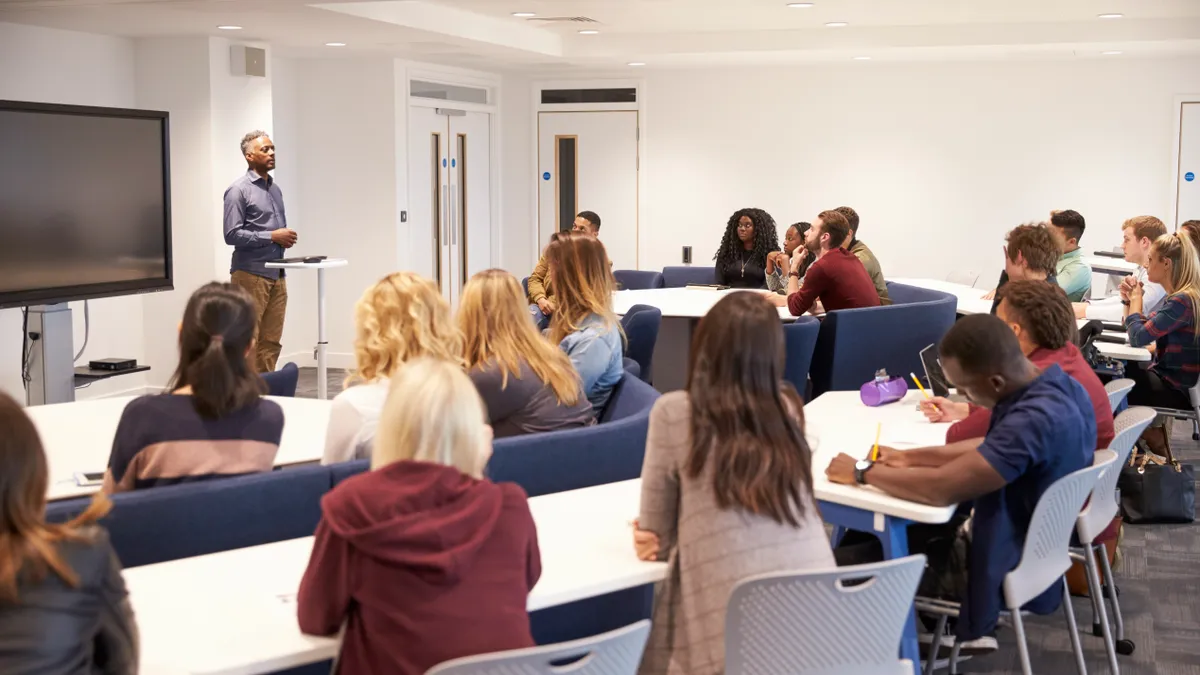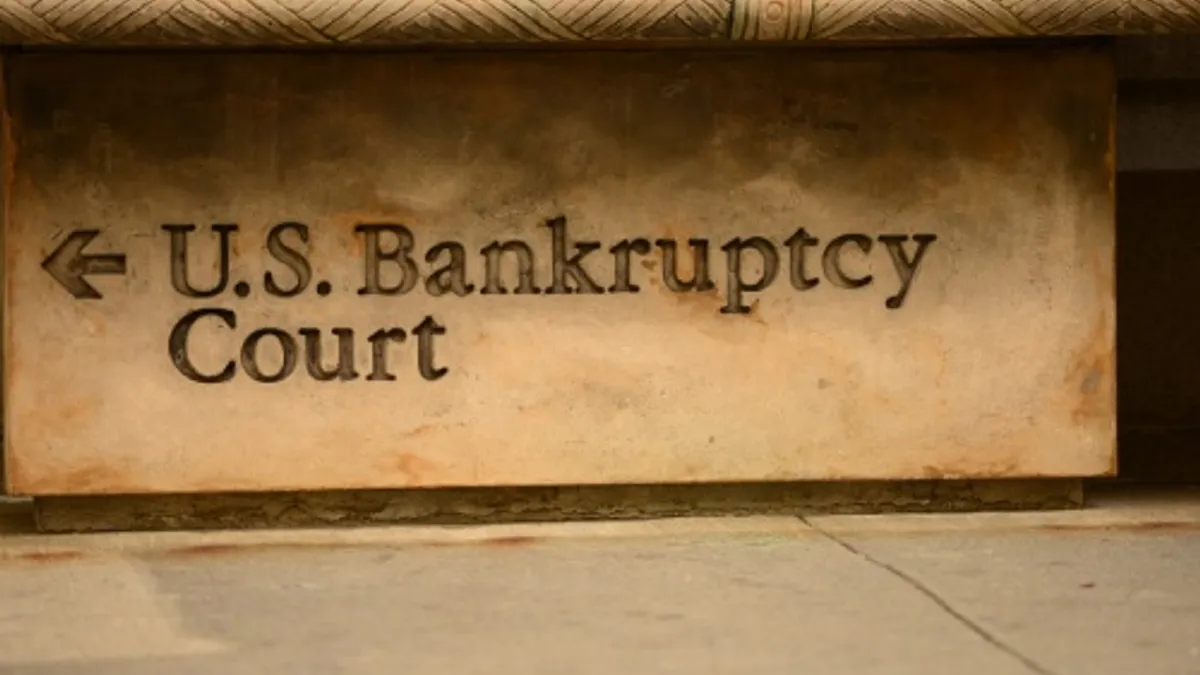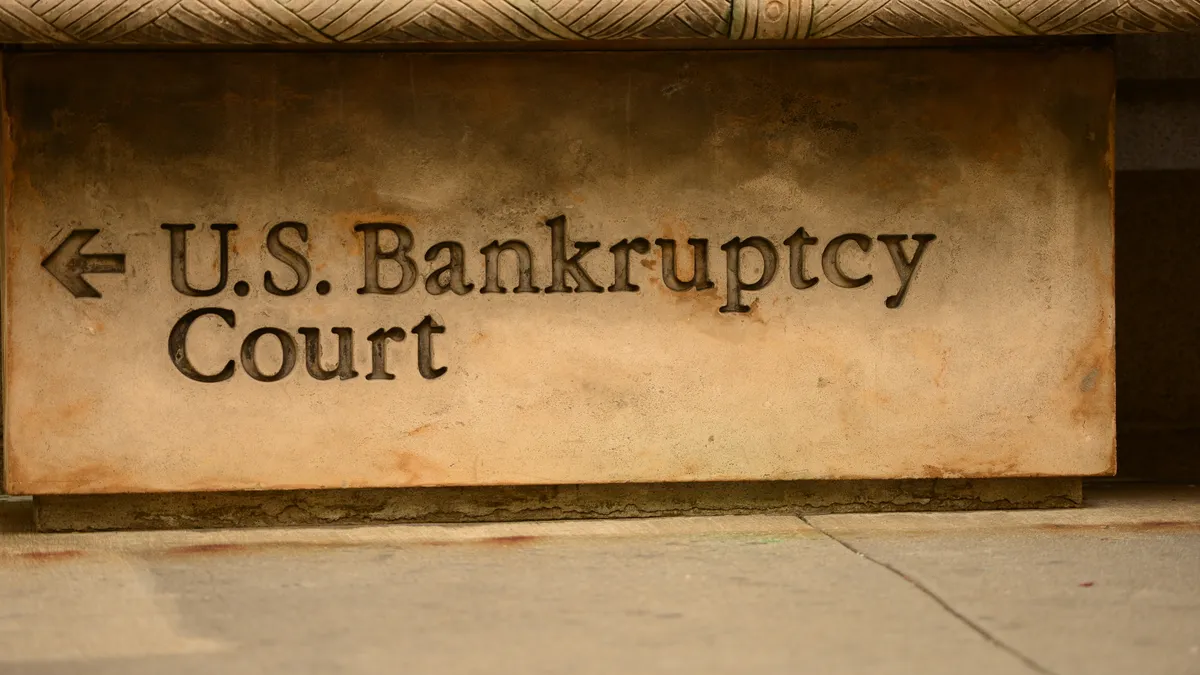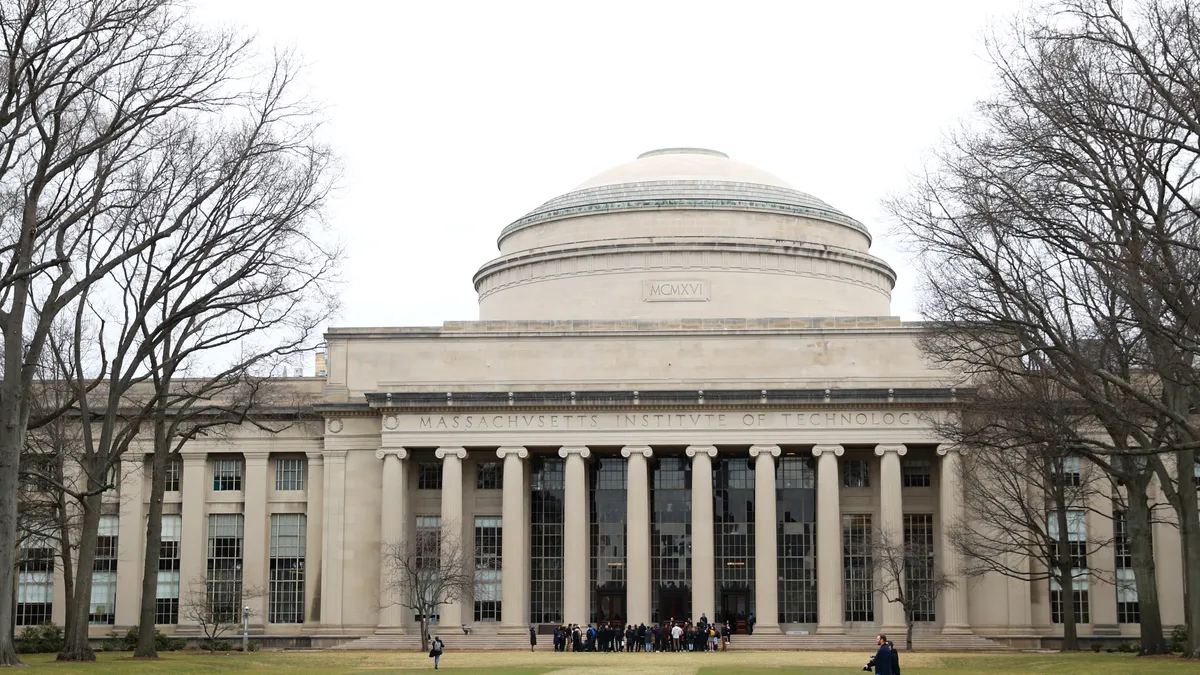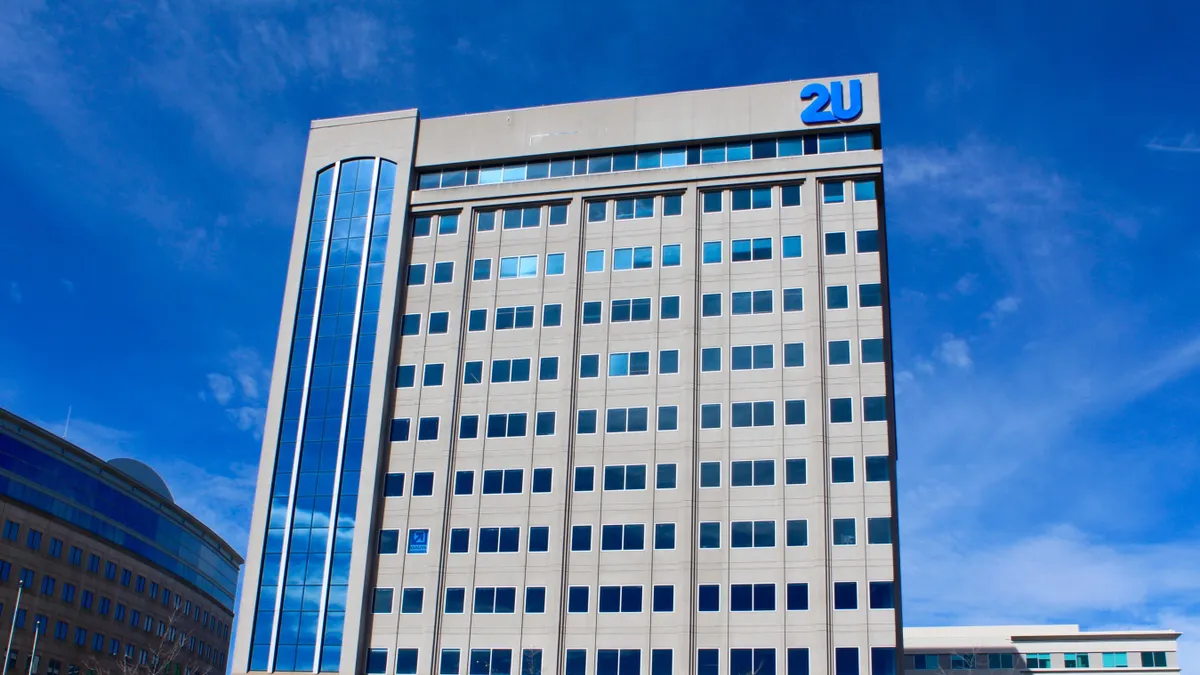In November, D2L became one of the latest ed tech companies to go public during the pandemic. The learning management system provider — which says demand for its services has grown during the health crisis — raised roughly $120 million from its initial public offering.
The move comes as D2L has been making inroads in the North American LMS market. The company's Brightspace platform is the fourth most popular in the U.S. and Canada, trailing behind Canvas, Blackboard and Moodle, according to a market-share analysis by Phil Hill, a partner at ed tech consultancy MindWires.
While competitor Canvas picked up the most LMS adoptions out of all tracked providers, D2L and its Brightspace product came in second, the analysis found.
John Baker, the company's founder and CEO, chalked that momentum up to several factors. For one, D2L is prioritizing accessibility and Brightspace's mobile experience. And the platform supports competency-based education, which has students progress through courses based on whether they demonstrate mastery of certain skills rather than on the time they spent learning.
"Nursing programs, engineering programs, education, medicine — all of these professions — are moving quickly to a competency-based model, and we're the only ones that support that in a really good way for these clients," Baker said.
D2L has racked up some major victories this year. New York University continued a transition to Brightspace, and the State University of New York system announced it was switching to the platform.
The company also launched a new product, called D2L Wave, which lets workers access an online catalog of educational offerings from partner institutions. While the service is meant to help companies reskill their workers, it has an upside for participating colleges, Baker said.
"We're providing an easier channel for them to reach hopefully thousands, if not millions of people around the world," he said.
Higher Ed Dive spoke to Baker in November to learn more about what's next for the company and how it will use the money raised from its IPO.
This interview has been edited for clarity and brevity.
HIGHER ED DIVE: Why was now the right time to go public?
JOHN BAKER: I set out to build this learning platform to break down barriers that get in the way of high-quality learning experiences.
Twenty years later, I don't think we've seen a time in our history where there's been more demand for a high-quality learning experience than there is today.
If you look across all of our markets in K-12, we've seen hundreds of millions of students falling out of schools and off the path of going to university or college. And we're going to jump in there with some better technology to help them get back on the right path for success.
And in universities and colleges, we're now seeing what was a headwind with COVID-19 turning into a tailwind as they are now looking for a better learning experience to support on-campus and online at the same time.
Then if you look at companies, we're helping hundreds of different companies around the world with their upskilling as they get ready for the future of work through digital economy transformations or through green transformations — all kinds of transformations happening in almost every sector of the economy. And we're trying to partner with our university and college clients to help them reskill and upskill the workforce.
For us, it was about taking the company public to really go execute against that mission, that original vision, if you will, and really have a big impact on people's lives.
Regarding higher education, how does the company plan to use the funds it raised?
Our first area of investment for us continues to be in research and development and also growing our relationships with our customers all over the world. So in our case, we work hard on making sure that we're building a product that our clients love. We're going to continue to add value to the core functionality of what we call Brightspace, our learning platform.
We're also bringing out new innovations. We've launched a product called Performance Plus, which is machine learning, artificial intelligence that helps our clients spot risk with learners. We're also launching enhancements through our Engagement Plus technology that helps our clients really build those high production-value courses by embedding their content with interactives, video and other types of technologies.
We're also, in addition to all of that, launching new innovations into the market. So one of our brand-new offerings that we're going to put investment behind is called D2L Wave. With employers, what they're doing is loading up their employees into D2L Wave, and they're getting presented a catalog of courses, microcredentials and programs from our university and college partners to be able to enroll into in order to do the upskilling that they're looking for for their future of work. And then on the university and college side, we're providing an easier channel for them to reach hopefully thousands, if not millions, of people around the world in the future with D2L Wave.
Instructure also recently went public, as did several other ed tech companies, including Coursera and Udemy. Why do you think so many companies in the sector are choosing to go public right now?
I think they're seeing what I'm seeing, which is massive tailwinds in the market. There's about a billion jobs that are expected to be transformed in the next decade. And then you're seeing huge demand for education globally. And so, you know, this is a good time for us to be taking on additional investment, to be able to go off and execute against that vision.
There's been an influx of investor money in ed tech during the pandemic. Do you think that that will start to wane as the health crisis subsides in the U.S. or do you think that will continue? [Editor's note: This interview was conducted before the omicron variant was detected in the U.S.]
I don't think we're going to see a slowdown in the investment into this space, because education globally is still less than 5% digitized. And so, you know, there's a lot of work ahead of us to be able to go off and support the digitization of education and workplace learning throughout the world.
What is the biggest shift your company has experienced from the coronavirus pandemic?
I think the biggest change in terms of higher education, it's been a shift to recognizing they have to have the right infrastructure to support both blended and online and to support all the different use cases across campus.
There's no alternative for these students. Some of these students want to have a mix. So that's a wake-up call to put in place the right learning infrastructure. That's been a very big change in higher education. We're only now just starting to see that turned into a tailwind that's driving change.
I think most people were very much heads-down, emergency response to dealing with the fallout of the pandemic. But we're now starting to see the leaders in the market — NYU, SUNY, others — making decisions to switch [to Brightspace] even during the pandemic now to provide a better experience for their students. Those are smart clients.







